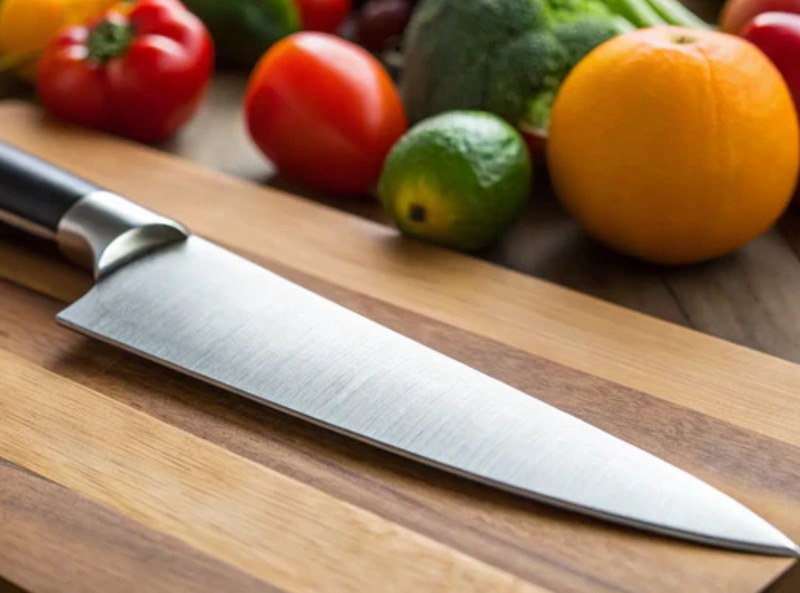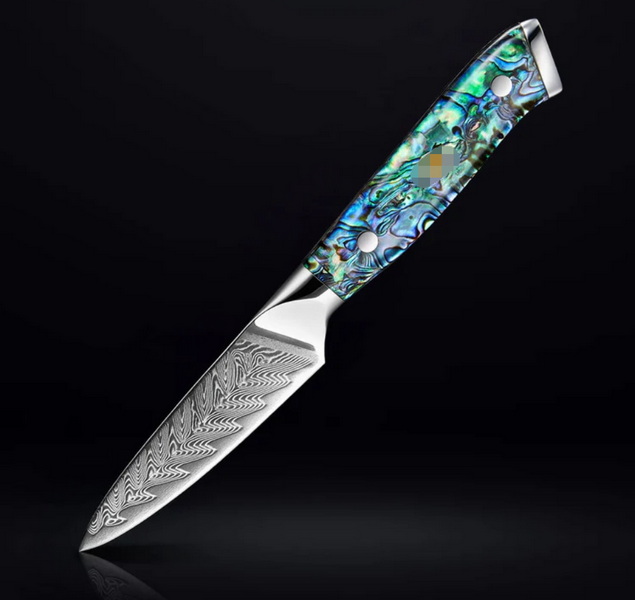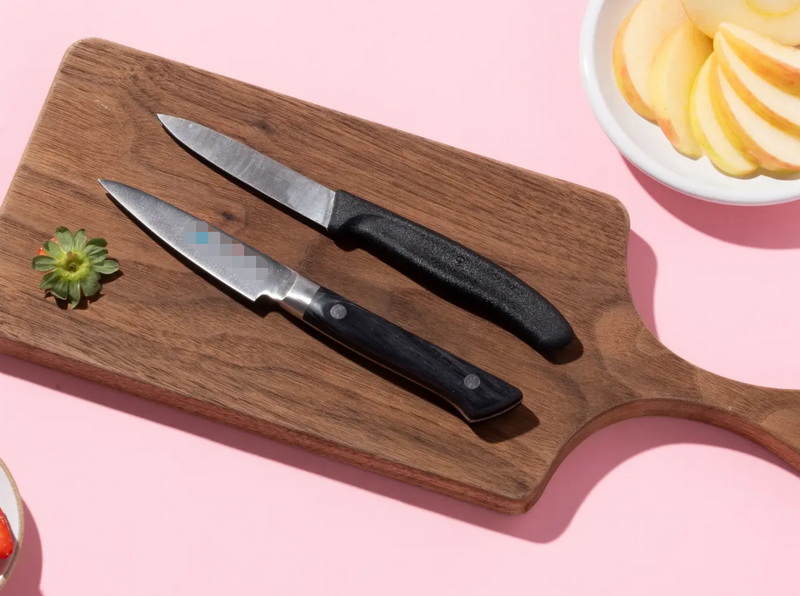- All
- Product Name
- Product Keyword
- Product Model
- Product Summary
- Product Description
- Multi Field Search
Views: 222 Author: Ann Publish Time: 2025-10-25 Origin: Site











Content Menu
● Design philosophy and value proposition
● Blade materials and construction
● Blade geometry and usability
● Handle design and ergonomics
● ManufacturingProcess and QualityControl
● Performance benchmarks for international markets
● Practical testing and evaluation
● Lifecycle considerations and after-sales
● FQA
>> What materials are best for affordable paring knives without sacrificing performance?
>> How should paring knives be sharpened for long-lasting performance?
>> Are forged paring knives worth the extra cost?
>> What handle materials are most suitable for OEM programs?
>> How can we ensure consistent quality across large OEM batches?
Paring knives are the precision instruments of the kitchen. They excel at delicate tasks such as trimming, peeling, deveining, and garnishing. For brand builders and retailers, offering a line of affordable paring knives that performs with the finesse of premium models can expand appeal in diverse markets. Our OEM capabilities enable flexible design, material selection, and packaging that align with branding goals, regulatory requirements, and consumer expectations across North America, Europe, Asia, and Australia. In this context, Paring Knives serve as a gateway product, introducing customers to a brand's commitment to quality and consistency.

- Precision metallurgy at a mindful cost
- Ergonomic handles that reduce fatigue during extended prepping
- Well-balanced blades with controlled flex for delicate cuts
- Durable edge retention suitable for home cooks and professional kitchens
- Thoughtful packaging and user education that reinforce perceived value
A well-crafted Paring Knife line can bridge price sensitivity with premium-perceived quality, enabling brands to compete effectively while maintaining margins. The avocado of value here is that even at lower priced tiers, consistent performance builds trust and repeat orders.
- Stainless steel alloys: A common choice for budget-friendly paring knives, offering corrosion resistance and acceptable edge retention. Blade thickness typically ranges from 1.5 to 2.0 mm, enabling fine control without rigidity.
- Carbon steel blends: Some markets favor carbon steel for its sharpness, with added corrosion protection through coatings or careful heat treatment. These blades require maintenance to prevent rust.
- Damascus and layered blades: For brands seeking a premium impression at a lower cost, laminated constructions can deliver aesthetic appeal and improved edge performance while leveraging cost-effective base steels.
- Heat treatment and hardness: Target hardness often sits in the 56–60 HRC range for a balance of sharpness and durability in affordable paring knives. Proper tempering reduces brittleness and improves edge life.
- Edge geometry: A subtle concave or flattening grind enhances initial sharpness and allows precise slicing of fruits, vegetables, and herbs.
For OEM programs, selecting blade material involves balancing cost, corrosion resistance, hardness, and customer expectations in each target market. In production, standardized heat-treatment protocols and consistent alloy sourcing are critical to uniformity across batches.
- Blade length: Typically 3.5–4.5 inches (9–11.5 cm). Shorter blades offer better control for peeling and trimming; longer blades cover more surface work without sacrificing precision.
- Point geometry: A sharp tip enables fine tasks like scoring, coring, and precise trimming around irregular shapes.
- Bevel angle: A 15–20 degree per side bevel is common for everyday use, offering a good compromise between edge retention and ease of sharpening.
- Rockwell hardness targets: Maintaining a consistent hardness across production batches ensures uniform performance and reliability.
We emphasize consistency in geometry and edge profiles across all units to ensure a uniform user experience, which is particularly important for international buyers managing large volumes.
- Material choices: Pakkawood, high-density polymer, composite resin, and synthetic microtextures offer durability, moisture resistance, and cost efficiency.
- Shape: Balanced handles that align with the blade's center of gravity reduce wrist strain during longer prep sessions.
- Tang and rivets: Full tang construction and secure rivets improve stability and safety in professional environments.
- Maintenance and cleaning: Handles should be easy to clean and resistant to moisture ingress to prevent staining and degradation over time.
Ergonomic considerations contribute to a perception of quality and reduce user fatigue, which is especially important for brands targeting professional kitchens and home cooks who value comfort.
- Forged vs stamped: For affordable lines, high-quality stamped blades with laser or electrochemical sharpening can achieve consistent performance with lower production costs. Forged options can be offered as premium variants within the same product family.
- Surface finish: Mirror-polished edges facilitate corrosion resistance and ease of cleaning, while satin finishes can hide scratches and come at lower fabrication costs.
- Edge sharpening: Production lines incorporate precise sharpening to achieve uniform edge geometry across all units.
- Quality checks: Inline hardness testing, blade straightness checks, handle fitment tests, and visual inspections for flaws ensure reliable performance before packaging.
- Coating considerations: If coatings are used for rust protection or aesthetics, ensure compatibility with food safety standards and ease of maintenance.
A robust QA protocol reduces returns and supports brand reputation in international markets. For Paring Knives, inline checks for edge uniformity and tip geometry are particularly impactful on perceived precision.

- Visual storytelling: Packaging that communicates reliability, value, and performance helps bridge price perceptions with perceived quality.
- Labeling and compliance: Ensure regulatory compliance across target markets (formulations, materials, and certifications as applicable).
- Instructional content: Include clear care guides, sharpening recommendations, and usage tips to empower users and reduce misuse.
- Private label potential: Our OEM capabilities support custom packaging, logo placement, colorways, and insert cards that align with brand identity.
Effective packaging reinforces the product's value proposition and accelerates consumer trust. For Paring Knives, adding a compact video QR code showing a quick peel or precise snap-cut can enhance engagement without inflating packaging complexity.
- Edge retention under typical home-use scenarios: Paring knives should maintain sharpness after repeated peeling and trimming tasks with minimal maintenance.
- Corrosion resistance: Stainless steel variants perform well in humid kitchen environments; avoid rust with proper cleaning and drying.
- Comfort and control: Ergonomic handles and balanced weight distribution contribute to precise cuts and reduced fatigue.
- Longevity: While budget lines prioritize cost efficiency, consistent quality controls extend the lifespan of the products, contributing to favorable reviews and repeat orders.
These benchmarks support a confident selling proposition for affordable paring knives in diverse regions. Brands benefit from transparent QA documentation that accompanies international shipments.
- Cutting tests: Peelings of apples, citrus segments, and vegetable skins gauge edge performance and control.
- Fatigue testing: Repetitive motions simulate extended prep sessions to assess handle comfort.
- Cleaning tests: Dishwasher and hand-washing simulations evaluate handle and blade resilience.
- Visual inspection: Look for blade straightness, edge uniformity, and secure handle attachment.
Documenting testing results provides credible evidence for marketing materials and QA documentation for OEM partnerships. A standardized testing protocol helps align supplier capabilities with client expectations in North American, European, and Asian markets.
- Replacement parts: Availability of spare blades and handles simplifies maintenance and procurement for large buyers.
- Warranties: Clear warranty terms build trust with international buyers, supporting brand confidence.
- Recycling and sustainability: Use responsibly sourced materials and packaging that aligns with sustainability expectations, particularly in Europe and North America.
A robust after-sales approach enhances brand loyalty and reduces friction in cross-border sales. Providing readily available replacement parts reduces downtime for professional users and enhances total cost of ownership.
Affordable paring knives can deliver high-end performance when design, materials, and manufacturing processes are aligned with user needs. For brand partners and OEM clients, we offer flexible solutions that balance cost efficiency with reliability, ergonomics, and market-ready aesthetics. By focusing on blade-material choices, ergonomic handle design, rigorous quality control, and compelling packaging, we can help you bring capable, premium-feeling paring knives to diverse global markets. This approach ensures Paring Knives deliver consistent performance across varied culinary tasks and market conditions, reinforcing brand equity and customer satisfaction.

- Stainless steel alloys with good corrosion resistance and balanced hardness provide an optimal mix for cost and performance, with careful heat treatment and edge geometry.
- Regular honing and periodic sharpening with a compatible whetstone or steel, following manufacturer-recommended angles, extend edge life.
- Forged blades offer durability and balance but at higher cost; high-quality stamped blades can deliver competitive performance in cost-conscious OEM programs.
- Durable, moisture-resistant materials such as high-density polymers and composite woods provide reliability and comfort at scale.
- Implement inline hardness testing, blade straightness checks, and standardized handle fitment tests with documented QC procedures.
The Ultimate Professional Knives for Halal Butchery in Middle Eastern Kitchens
Chef Knife Size Guide: Choosing Between 6″, 8″, 10″, And 12″
Custom Knife Handles: How To Design A Chef Knife That Fits Your Hand Perfectly
Chef Knife Surface Treatments Guide: From Polished Migaki To Damascus Patterns
Inside Our Professional Knife Sample Room: Quality You Can See
Universal Knife Block Buying Guide: Modern Acrylic & ABS Knife Holders for Professional Kitchens
Universal Knife Block: The Complete Guide To Modern, Hygienic Knife Storage
The Complete Guide To Red Handle Knife Sets: Style Meets Functionality in The Kitchen
Professional Knives for Halal Butchery And Middle Eastern Cuisine